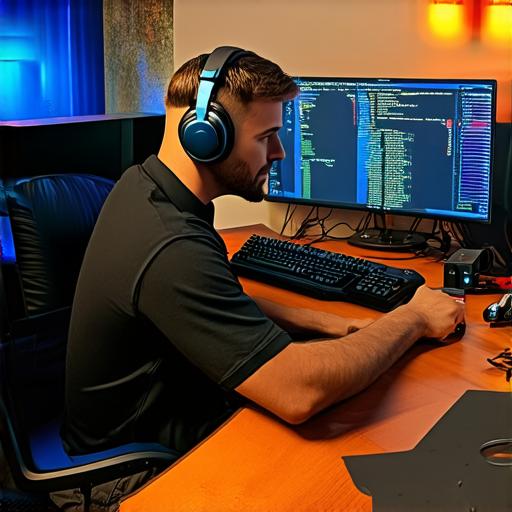NFT games have become increasingly popular in recent years, as they offer players a unique and immersive gaming experience that combines elements of blockchain technology, gaming, and collecting. However, creating an NFT game requires careful planning and execution to ensure that it resonates with its target audience and achieves its intended goals.
Key Steps Involved in Creating an NFT Game:
-
Define your goals: The first step in creating an NFT game is to define your goals and what you hope to achieve through it. This might include increasing user engagement, generating revenue, or building a community around your brand. Once you have a clear understanding of your goals, you can begin to develop a roadmap for your game that will help you stay on track and ensure that you are making progress towards achieving them.
-
Research the market: Before diving into the development process, it’s important to research the NFT gaming market and understand what players are looking for in terms of games and what they are willing to pay for them. This will help you identify any gaps in the market that your game could fill and give you a better understanding of what features and elements you should include to make it stand out.
-
Choose your blockchain platform: The next step is to choose the blockchain platform on which you will build your NFT game. There are several options available, including Ethereum, Binance Smart Chain, and Polygon. Each platform has its own strengths and weaknesses, so it’s important to choose one that aligns with your goals and target audience.
-
Create your NFTs: One of the key elements of an NFT game is the creation of unique and valuable NFTs that players can collect and trade. This might include characters, items, or other assets that are tied to the game’s story or theme. To create your NFTs, you will need to work with a team of designers and developers who have experience in creating NFTs on your chosen blockchain platform.
-
Build your game: Once you have your NFTs, you can begin building your game. This might include designing levels, creating quests, and developing mechanics that allow players to interact with the NFTs they have collected. To ensure that your game is engaging and fun to play, it’s important to work closely with a team of game designers who have experience in creating interactive and immersive games.
-
Launch and market your game: Once your game is ready, you will need to launch it and begin marketing it to your target audience. This might include creating social media campaigns, partnering with influencers, and running advertising on gaming platforms. To ensure that your game gets the attention it deserves, it’s important to have a solid marketing plan in place from the outset.
-
Monitor and adjust: Finally, once your game is live, it’s important to monitor its performance and make adjustments as needed. This might include tweaking game mechanics, adding new NFTs, or adjusting pricing based on player feedback. By regularly monitoring and adjusting your game, you can ensure that it continues to engage and delight players, and achieve your intended goals.
FAQs:
-
What are the most popular blockchain platforms for creating NFT games?
-
The most popular blockchain platforms for creating NFT games are Ethereum, Binance Smart Chain, and Polygon. Each platform has its own strengths and weaknesses, so it’s important to choose one that aligns with your goals and target audience.
-
How do I create NFTs for my game?
-
To create NFTs for your game, you will need to work with a team of designers and developers who have experience in creating NFTs on your chosen blockchain platform. This might include characters, items, or other assets that are tied to the game’s story or theme.
-
How do I market my NFT game?
-
To market your NFT game, you will need to create a solid marketing plan that includes social media campaigns, influencer partnerships, and advertising on gaming platforms.

